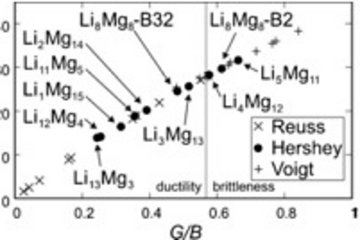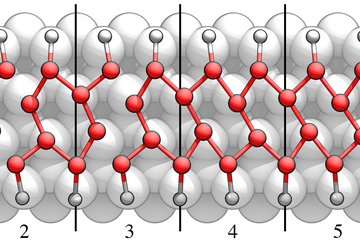All genres
1041.
Talk
Strategizing for hydrogen embrittlement by protecting the weakest microstructural element. ECF24 - European Conference on Fracture 2024 in Croatia, Zagreb, Croatia (2024)
1042.
Talk
The Basic Science of Green Steel. Colloquium Lecture, Physics Department, Augsburg University, Augsburg, Germany (2024)
1043.
Talk
Exploring the Relationship Between Grain Boundary Structure and Chemical Composition at the Atomic Level. International Conference on Intergranular and Interphase Boundaries in Materials (IIB 2024), Beijing, China (2024)
1044.
Talk
Grain boundary-controlled lithiation of Li-solid solution systems for lithium metal batteries. International Operando Battery Days, Grenoble, France (2024)
1045.
Talk
Active learning strategies for the sustainability of structural metals. Royal Society Discussion Meeting on Sustainable Metals: Science and Systems, London, UK (2024)
1046.
Talk
Segregation-Driven Mechanics of White Gold at the Nanoscale: A Cursing or Blessing? Schöntal Symposium on Dislocation-based Plasticity 2024, Kloster Schöntal, Germany (2024)
1047.
Talk
Phase-field model for Hydrogen based direct reduction of iron oxides: Role of porosity. TMS - Algorithm Development in Materials Science and Engineering, Orlando, FL, USA (2024)
1048.
Talk
Transport and phase transformations phenomena in sustainable hydrogen-based steel production. 87th Spring Meeting of the German Physical Society, Berlin, Germany (2024)
1049.
Talk
Atomic-Scale Perspective at Alloy-Design for Additive Manufacturing. 2024 TMS Annual Meeting, Orlando, FL, USA (2024)
1050.
Talk
The Two Billion Tonnes Question: How Can Research Help to Make Metals Sustainable? 2024 TMS Annual Meeting, Orlando, Florida, USA (2024)
1051.
Talk
Multi-technique investigation of Fe-rich intermetallic compounds for more impurity-tolerant Al alloys. Annual Meeting of DPG and DPG-Frühjahrstagung (DPG Spring Meeting) of the Condensed Matter Section (SKM) 2024, Berlin, Germany (2024)
1052.
Talk
Basic Materials Science Aspects of Green Metal Production. Royal Society Conference on Sustainable Metals: Science and Systems, London, UK (2024)
1053.
Talk
Some Materials Science Aspects Behind Sustainable Steel. Colloquium Lecture, Engineering Department, Freiburg University, Freiburg, Germany (2024)
1054.
Talk
Accelerated Continuum Crystal Plasticity and Phase Field Microstructure Modeling Using U-Net. MRS Fall Meeting, Boston, MA, USA (2023)
1055.
Talk
Green Steel Production by Hydrogen-Based Plasma Reduction of Iron Oxides. MRS Fall Meeting, Boston, MA, USA (2023)
1056.
Talk
Atomic Scale Analysis Reveals the Interplay between Grain Boundary Structure and Composition. MRS 2023, Boston, MA, USA (2023)
1057.
Talk
The Materials Science Behind Hydrogen-Based Steel Making. NIMS Award Commemorative Lecture 2023, Tsukuba, Japan (2023)
1058.
Talk
The Interplay of Lattice Defects and Chemistry at Atomic Scale and Why it Matters for the Properties of Materials. Van Horn Distinguished Lecturer Series, Cleveland, OH, USA (2023)
1059.
Talk
The Materials Behind Green Steel. Van Horn Distinguished Lecturer Series, Cleveland, OH, USA (2023)
1060.
Talk
The 2 Billion Ton Question—How Can Metals Become More Sustainable? Van Horn Distinguished Lecturer Series, Cleveland, Ohio, USA (2023)











